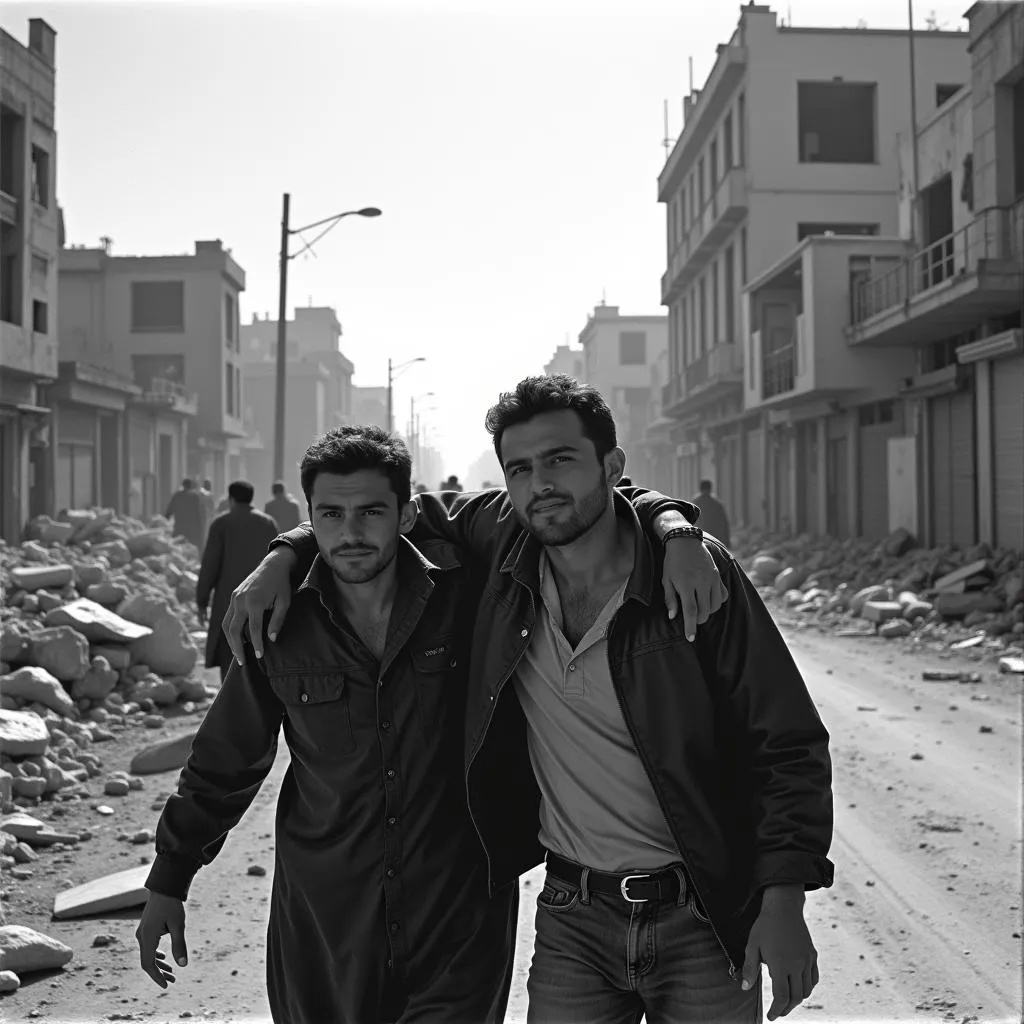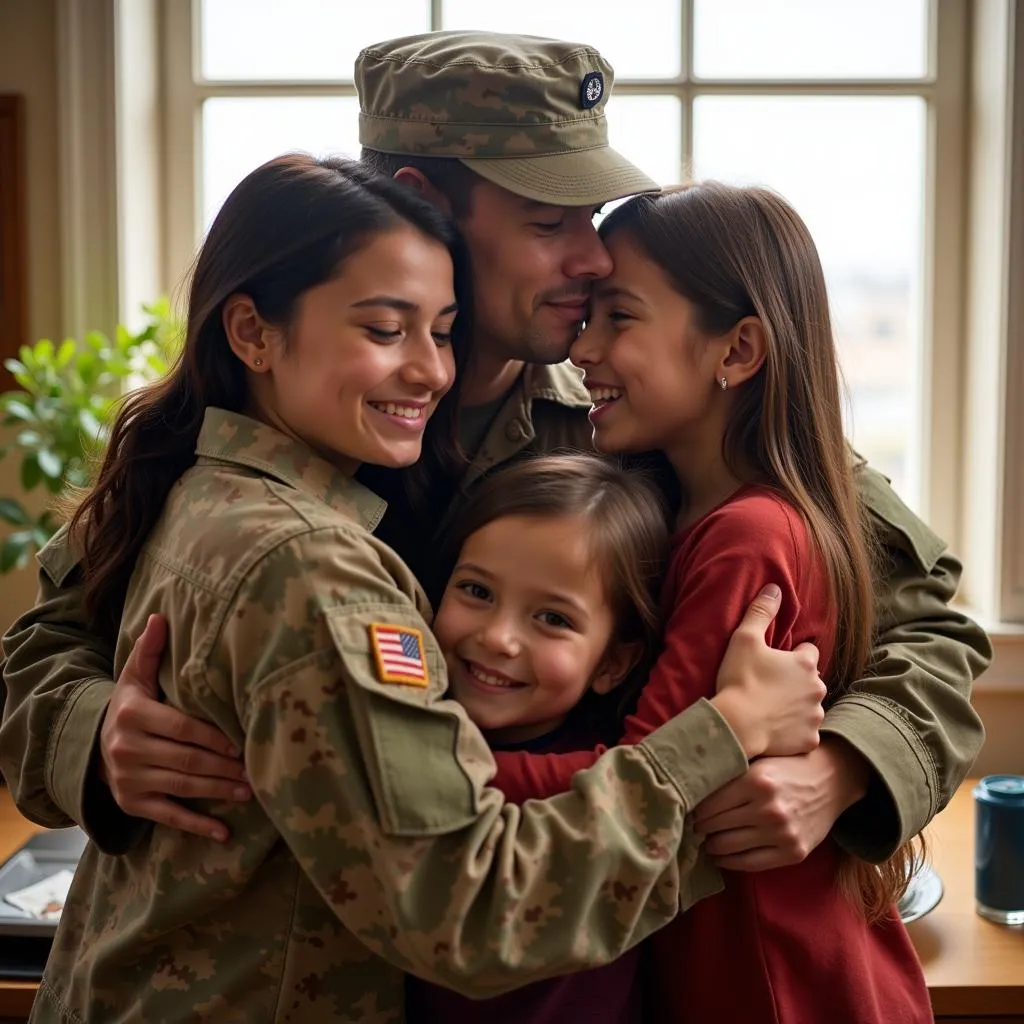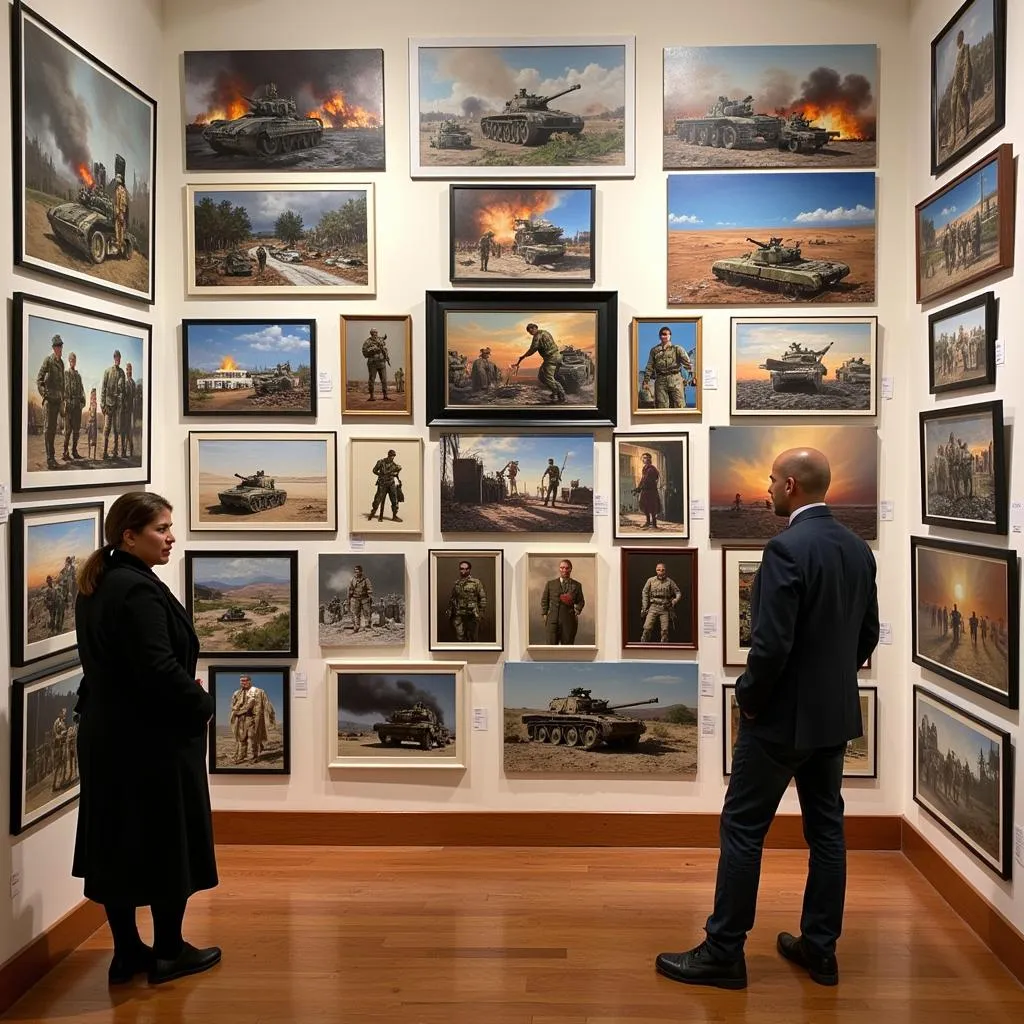The Iraq War, a defining global event of the 21st century, has left an indelible mark not only on the landscapes and people of Iraq but also on the world’s artistic consciousness. “Iraq War Art” transcends geographical boundaries and traditional art forms, encompassing a diverse range of creative expressions born from the ashes of conflict. From poignant paintings and sculptures to thought-provoking photography and digital installations, artists around the globe have grappled with the complexities of war, documenting its human toll and sparking dialogue on its far-reaching consequences.
The Power of Visual Storytelling: Amplifying Voices Silenced by War
 Iraqi civilians navigate a war-torn street
Iraqi civilians navigate a war-torn street
Art possesses a unique ability to communicate across language barriers, transcending words to convey the raw emotions and profound experiences often lost in the cacophony of war. Through evocative imagery, “Iraq War Art” provides a platform for marginalized voices, amplifying the stories of soldiers, civilians, and artists directly affected by the conflict. Their perspectives, often absent from mainstream narratives, offer a poignant counterpoint to official accounts, revealing the human cost of war with unflinching honesty.
Beyond the Battlefield: Exploring the Ripple Effects of Conflict
 American soldier reunites with family
American soldier reunites with family
“Iraq War Art” delves beyond the immediacy of the battlefield, exploring the far-reaching ripple effects of conflict on individuals, families, and societies. Artists grapple with themes of loss, trauma, displacement, and the moral complexities of war, prompting viewers to confront the uncomfortable realities that extend far beyond the cessation of hostilities. These artistic expressions serve as a poignant reminder that the true cost of war is measured not only in casualties but also in the enduring scars it leaves on the human psyche.
Legacy of War: Shaping Collective Memory and Inspiring Action
 Art exhibition featuring Iraq War paintings
Art exhibition featuring Iraq War paintings
“Iraq War Art” plays a crucial role in shaping collective memory and understanding of the conflict, ensuring that its lessons are not forgotten. By preserving personal narratives and challenging dominant narratives, these artistic expressions contribute to a more nuanced and comprehensive historical record. Moreover, “Iraq War Art” has the potential to inspire action, prompting viewers to engage in critical reflection on the causes and consequences of war, ultimately fostering a culture of peace and dialogue.
Conclusion
“Iraq War Art” stands as a testament to the enduring power of art to bear witness to history’s most challenging chapters. Through a myriad of creative expressions, artists have captured the profound human cost of the Iraq War, amplifying silenced voices and sparking crucial conversations about the enduring legacy of conflict. As we navigate an increasingly complex world, “Iraq War Art” serves as a poignant reminder of the importance of empathy, understanding, and our shared responsibility to strive for a more peaceful future.